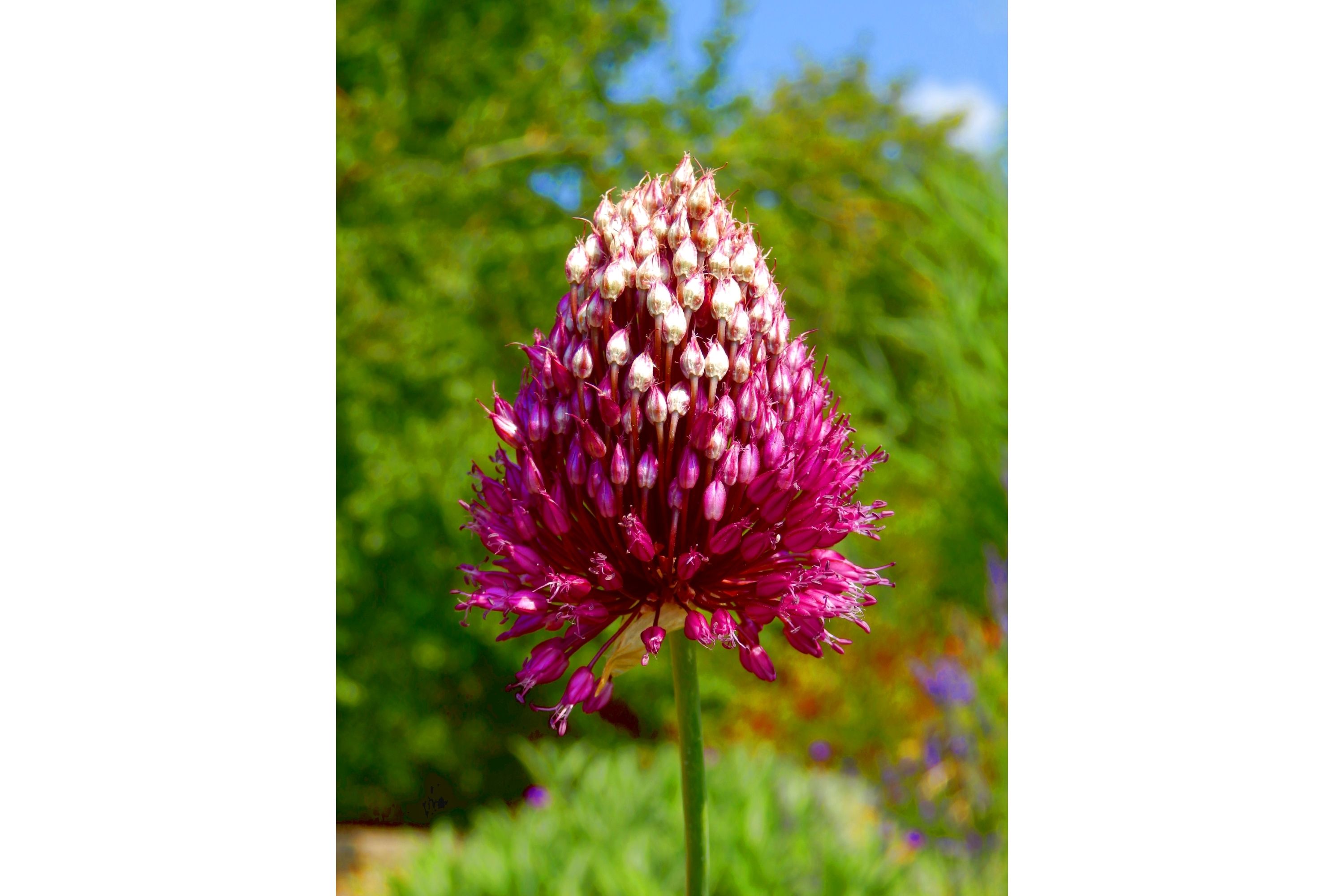"Round-headed leek "
(Allium sphaerocephalon)

Description
Allium sphaerocephalon is a plant species in the Amaryllis family known as round-headed leek, round-headed garlic, ball-head onion, and other variations on these names. Drumstick allium is another common name applied to this species. Some publications use the alternate spelling Allium sphaerocephalum. It is a bulbous herbaceous perennial plant. Allium sphaerocephalon is found in the wild across all parts of Europe except in the northern and western countries ( Scotland, Ireland, Netherlands, Scandinavia, and the Baltic States). Its native range extends to northern Africa and to western Asia as far east as Iran. It is also reportedly naturalised in New York State, US. In England it grows wild only in the Avon Gorge so is known locally as the Bristol onion. The species is prized by gardeners because of its striking floral display. The spherical "head" (technically an umbel) is borne on a long scape, up to 50 cm in height, usually in July. It can contain hundreds of deep purple flowers. The specific epithet sphaerocephalon derives from ancient Greek, meaning "spherical head". Allium sphaerocephalon produces egg-shaped bulbs. Small bulblets are present under the outer layer of the stem (making the plant potentially invasive when grown in gardens). Flowers are borne on a scape up to 50 cm in height, in a spherical to egg-shaped umbel, 1–6 cm in diameter, tightly packed with many flowers crowded together. The relatively small size of the umbel relative to the height of the stem makes this one of those described as 'drumstick alliums'. Individual flowers are reddish-purple and are occasionally replaced by bulbils (again making this a potentially invasive species). Allium is a genus of monocotyledonous flowering plants that includes hundreds of species, including the cultivated onion, garlic, scallion, shallot, leek, and chives. The generic name Allium is the Latin word for garlic, and the type species for the genus is Allium sativum which means "cultivated garlic". Carl Linnaeus first described the genus Allium in 1753. Some sources refer to Greek ἀλέω (aleo, to avoid) by reason of the smell of garlic. Various Allium have been cultivated from the earliest times, and about a dozen species are economically important as crops, or garden vegetables, and an increasing number of species are important as ornamental plants. The decision to include a species in the genus Allium is taxonomically difficult, and species boundaries are unclear.
Taxonomic tree:







